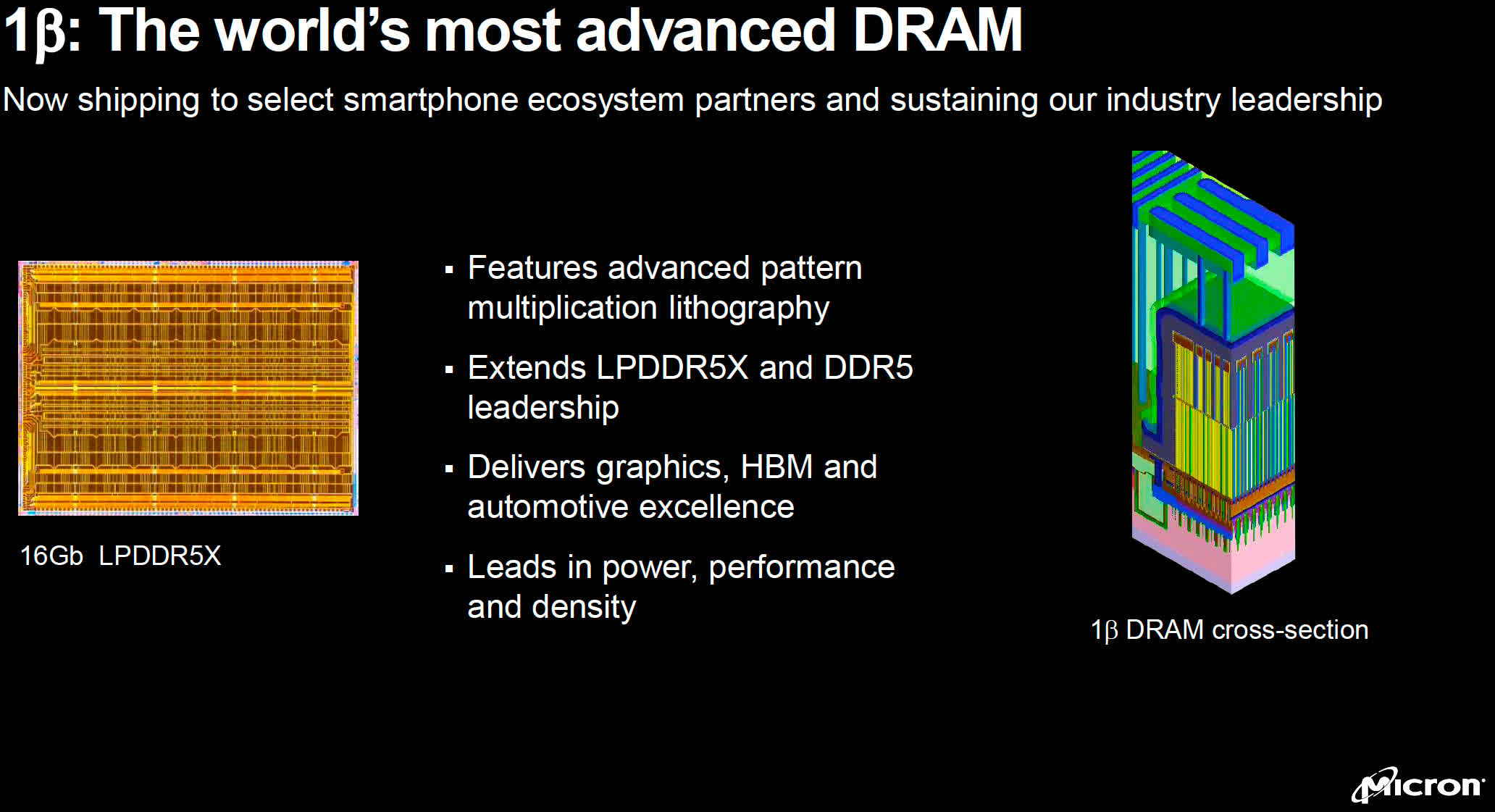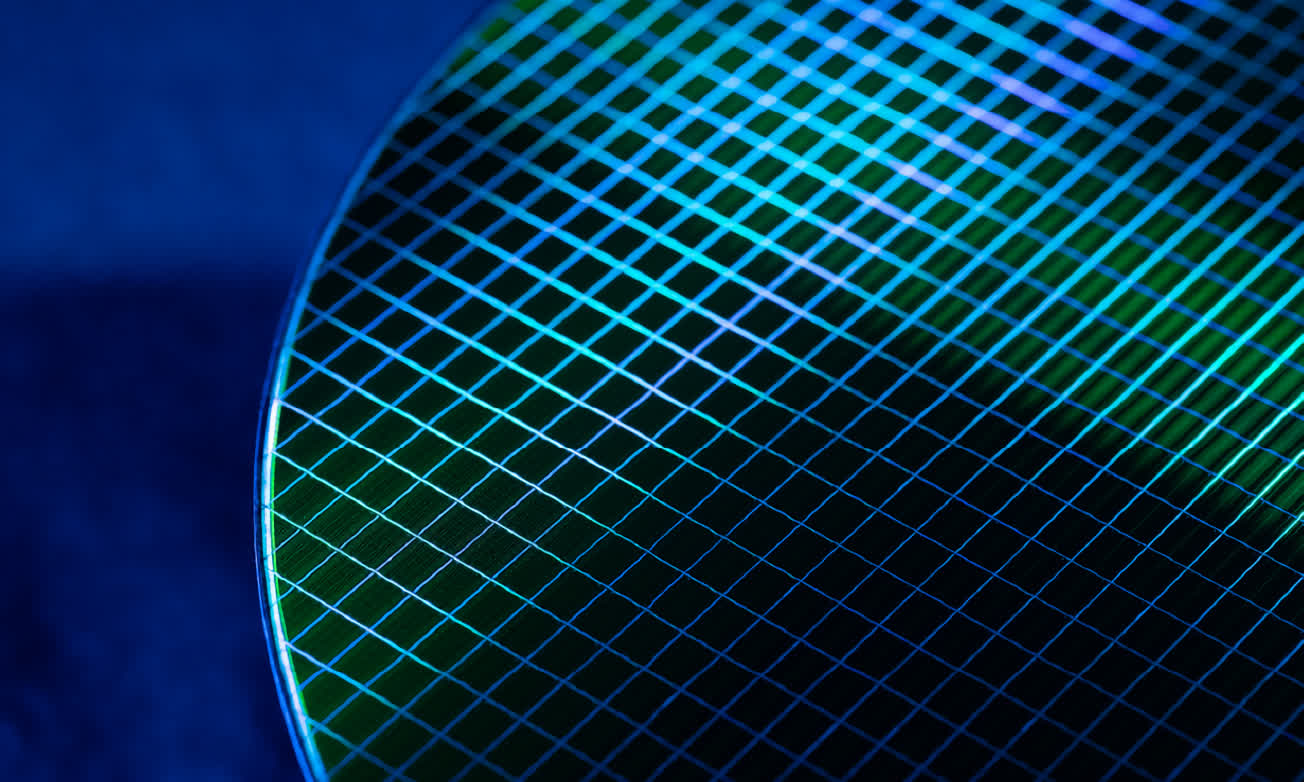In brief: Micron is now shipping qualification samples of what it claims is the world's most advanced DRAM technology node. Following volume shipment of 1-alpha in 2021, the new 1-beta LPDDR5X is better in virtually every way. According to Micron, the node is about 15 percent more energy efficient and affords a more than 35 percent bit density improvement with a 16Gb per die capacity.
Micron executive Scott DeBoer said the tech is brought to life by their proprietary multi-patterning lithography combined with leading process technology and advanced materials capabilities. With its proprietary multi-patterning lithography, Micron has been able to bypass the extreme ultraviolet (EUV) light tech that others have been using as of late.

Mobile devices will be the first to reap the benefits of Micron's new tech. AI and data-hungry 5G applications will no doubt make good use of the increased bandwidth and even core apps like the camera will benefit from reduced launch times and improved night and portrait mode performance.
Micron also implemented new JEDEC enhanced dynamic voltage and frequency scaling extensions core (eDVFSC) techniques. According to the company, the addition of eDVFSC enables a frequency of up to 3,200 megabits per second compared to just 1,600 megabits per second for 1-alpha.
Related reading: Micron's 232-layer NAND starts shipping with up to 2TB per package
RAM that requires less power could free up capacity for more powerful processors, result in better battery life with current-gen hardware or a mix of both.
Last month, Micron announced plans to spend up to $100 billion over the next two decades to build a world-class semiconductor fabrication facility in Upstate New York. It represents the largest private investment in the history of New York and according to lawmakers, the recently passed CHIPS and Science Act paved the way for Micron to build in the US instead of going overseas.
Micron said it plans to ramp up the rest of its portfolio on 1-beta including client, consumer, industrial, embedded, data center and automotive segments over the next year.
